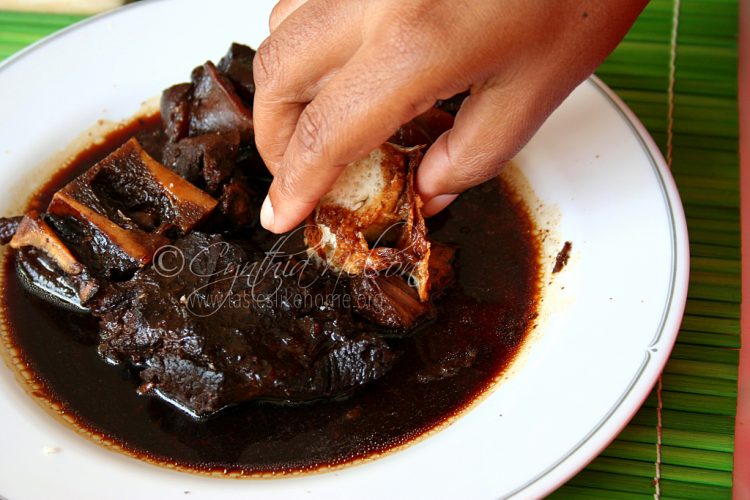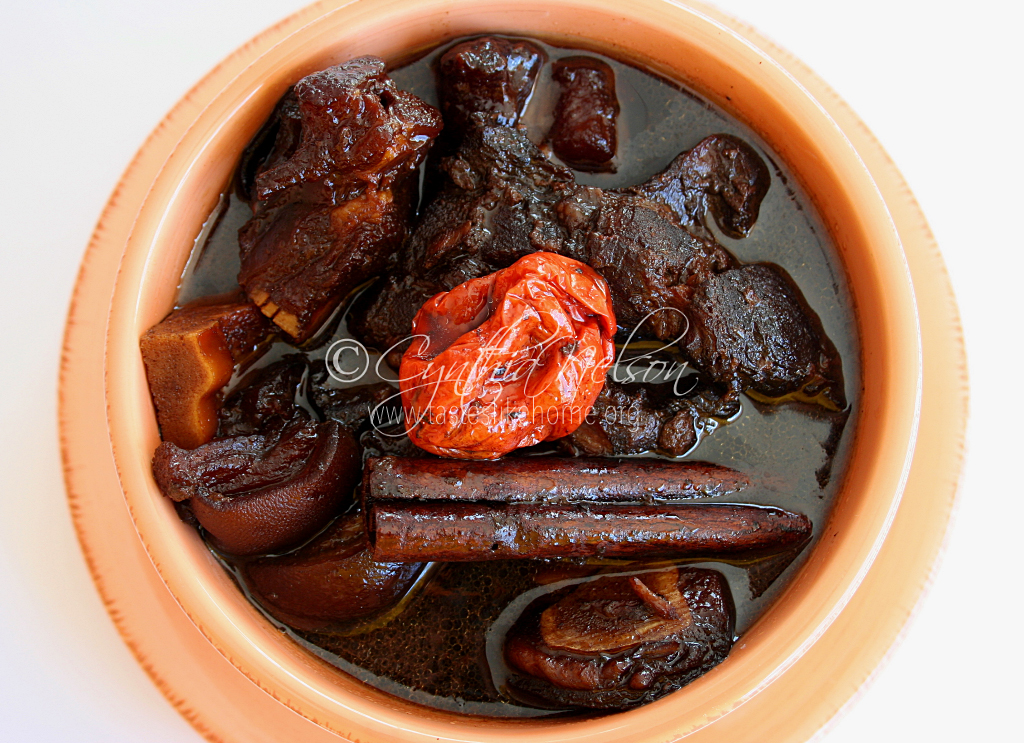
Which camp are you in? Perhaps we should first take a look at what it means to pressure cook and boil.
According to world renowned authority on the chemistry of foods and cooking, Harold McGee, to pressure cook is to tightly seal meat(s) and cooking liquid in the pot, allowing the vaporising water to build up the pressure to double the normal air pressure. This increased pressure increases the boiling point. High pressure and temperature put together produce an overall doubling or tripling of the heat transfer rate into the meat. This method of cooking efficiently converts collagen to gelatin. Food is cooked in considerably less time.

On the other hand, boiling is when the heated pot (with its contents) comes to a rolling boil where large bubbles are visible. In this process, the vaporising liquid becomes steam. The steam evaporates when the pot is uncovered, but if the pot is lidded, then it retains most of the steam, though not increasing the boiling temperature.
Okay, so without getting technical, we have a grasp of what is involved in the two cooking methods. What is at the heart of the debate? Is it about which Pepperpot tastes better based on the cooking method employed? Let’s discuss.
At the heart of any good pot of Pepperpot are two things – the texture of the cooked meats and the sauce. Is one of these things more important than the other? Or is the quality of both equally important? That might be a subject for another debate and one that I believe is based on personal preference. I will declare my preference. For me, Pepperpot is all about the sauce. However, I know that without the meats being cooked to a certain degree (to release their collagen, converting it to gelatin) and being further heated over a period of days to concentrate the sauce, thus creating depth of flavour, my Pepperpot will simply be meat in a watery dark sauce. Me ain’t want duh (lol).
I want when I break off a piece of my homemade white bread and drag or press it into the sauce, that the sauce clings to the bread, darkening it with its deep rich colour, and drips heavy as I lift the bread to my mouth. I want my lips and fingers to feel a little sticky as I lick them. For me, the meat at this stage is secondary, it has completed its job in contributing flavour and texture to my Pepperpot, which, as I said, for me is all about the sauce.
Pressure cooking is about speed. It is a method of cooking that saves time, money, and fuel. Therefore, it makes sense for many people to prefer using a pressure cooker to make Pepperpot. It is a dish that uses cuts of meat that contain mostly muscle and tissue that need a lot of time to be broken down to soften, and to release their much-needed collagen that contributes significantly to the consistency of the overall dish, particularly the sauce. At this first stage of cooking, where the meats are softened and cooked through, the sauce may not be of the desired consistency, so some people would release the pressure, opening the pot and let the dish continue to cook, by boiling, either with the lid removed completely, partly covering the opening or by simply resting the lid on top of the pot. This way, the cooking liquid continues to reduce, getting to the desired consistency, without breaking down too much, the already cooked, softened meat. Given that Pepperpot is a dish that gets better with age, there are those that would stop the cooking process since everything is cooked through and over the next few days, reheat the Pepperpot either by bringing it up to a boil for a period of time or by pressuring it for a short period of time.
The making of Pepperpot is about tradition and preference. Our Indigenous ancestors would have cooked this dish in large cauldrons over open fire, using considerable skill regulating the heat.
People who prefer to boil their Pepperpot even though they too would be concerned about time, money, and fuel, may be doing so for any number of reasons, not the least of which is tradition – it is how it was always made in their home growing up. Or it could simply be a preference. Boiling Pepperpot lends itself more to the ritual involved in the everyday reheating of the dish. On the first day of cooking, though the meats may be cooked through, they may not be as soft as needs be, however, with the daily reheating and boiling for a period of time, within days, and in time for the Christmas morning breakfast spread, the dish would have achieved its desired state of perfection – tender meat, sauce thick and rich with flavour and bones saturated with sauce to suck on.
To pressure cook or boil Pepperpot is not about which is better. I think it is about preference, convenience, and tradition. The one thing I must point out here is that with pressure cooking, the proteins get very hot, squeezing out much of their moisture. Therefore, the meat must be well endowed with fat and collagen to end up anything but dry. So all you lean-meat Pepperpot people. Watch out.
Growing up, my Mother would pressure cook to soften the meats and then boil gently on low heat over a few days. This way, she continued to extract every bit of collagen from the meats thus thickening the sauce and deepening its flavour. I flip flop and cook Pepperpot based on how I feel. Sometimes I do like my mom did – pressure cook then boil or do a full boil. I do not really have a preference, but I find myself boiling more often than pressure cooking. Here’s why: Firstly, I cook with natural gas and that is one of the few things that’s not expensive here (in Barbados), so cooking the meat for the hours needed is not something I worry about.
Secondly, I like to remove the froth when the pot is about to come to a boil, simply because I find it unappealing. Thirdly, I like to boil because I can easily remove the excess fat that floats at the top. Of course that can easily be done by letting the Pepperpot cool completely and scooping off the white layer of fat that sits on the surface.
You know, as I finished writing the preceding paragraph, I realised that I like boiling because I love the way the aroma of the spices warms and fills the air. It says Christmas.
I’d really like to hear your thoughts on the subject and which method you use to cook your Pepperpot – pressure cook or boil?
Cynthia






